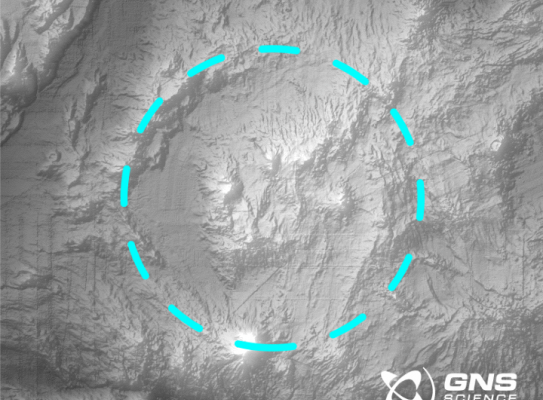Scientists discover what might be the world’s largest known caldera

The discovery of a mega-volcano off the Philippines coast has scientists reaching for inter-planetary comparisons – as they study what could be the world’s largest caldera.
Jenny Barretto and Ray Wood from GNS Science, and John Milsom from Gladestry Associates (UK) made the remarkable discovery while conducting a study on the Philippines’ continental shelf.
A caldera is a large volcanic depression resulting from the collapse of a volcano due to emptying of its magma chamber following eruptions or magma withdrawal.
In a paper published in the journal Marine Geology, the team explains how they identified the Apolaki caldera by studying the bathymetry, or topography of the seafloor.
Ms Barretto says that the group began studying the Philippine continental shelf in 2008, but it wasn’t until 2015 that they began looking at the features of the Benham Rise in more detail.
They noted the morphology was consistent with other volcanic calderas, but about 150 kilometres wide – more than three times the diameter of Lake Taupo.
The name Apolaki, chosen by Ms Barretto, literally translates to ‘giant lord’ in Filipino - indicating the large size of the caldera. Apolaki is so large that no comparison is available on Earth - during the review process, scientists had to draw on comparisons with calderas from Venus and Mars.
The discovery of such a large caldera raises questions about volcanism in the Benham Rise around 48-41 million years ago and what special conditions were present for the Apolaki caldera to form.
If the team’s conclusions are confirmed by further research, it will officially become the largest known caldera on Earth.

We are excited about the discovery of the submarine Apolaki caldera, and the implications this has for understanding large-scale volcanic processes.
“The next step is for us to confirm that this is indeed a volcanic caldera through rock sampling and geophysical studies. We are delighted that our findings have been published as no other caldera of this size has been discovered before.”
With more than 80% of the world’s ocean floor currently unmapped, the study is a valuable contribution towards a world-wide push to add to existing bathymetry that ultimately may lead to further unique discoveries like Apolaki.
